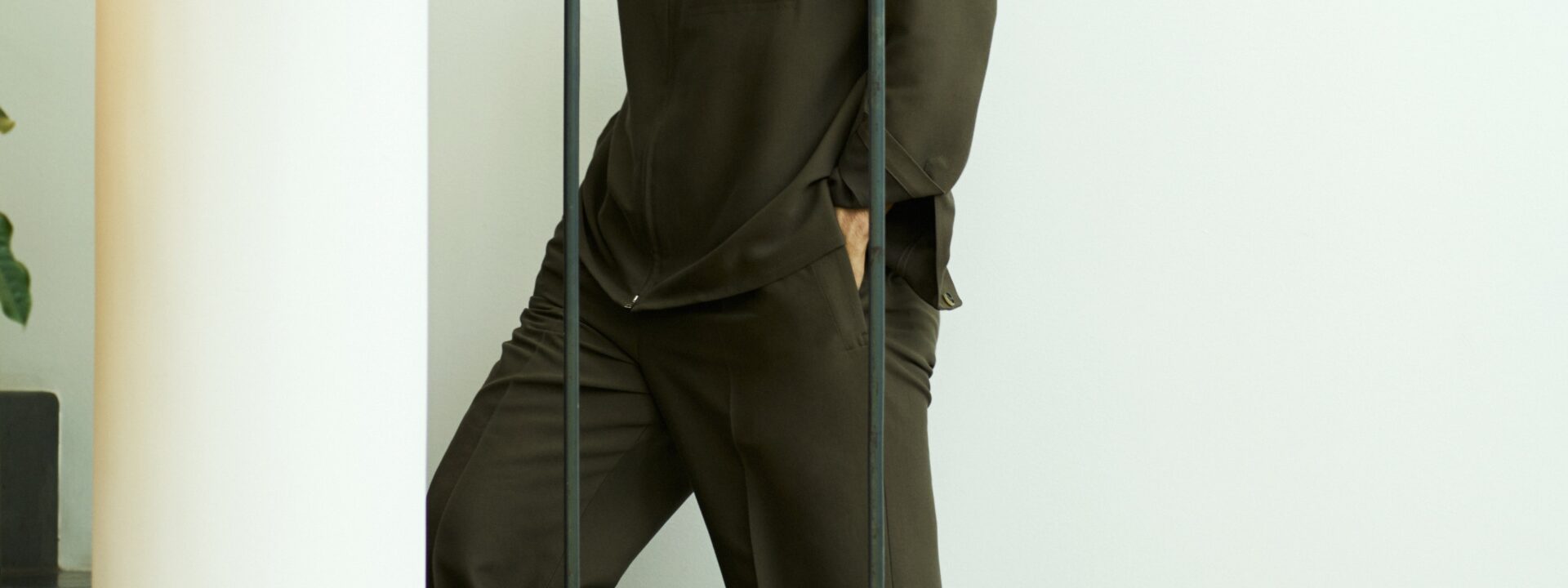Umit Benan is back on Via Bigli with more than just a new location—Spring 2026 marks a major turning point for the brand, as it opens its flagship store and fully launches its womenswear line. “It’s destiny,” Benan said with a smile. “This was my first home in 2005, and in 2010, I presented a project with Nino Cerruti in this same building.” Now, with backing from D Capital and the recent arrival of his newborn son just before the launch, the designer has come full circle in both his personal and professional life.
For the new womenswear, Benan explained, “We want it to stand on its own. It’s not about being the wife of our male customer—it’s about a woman with her own identity.” He drew inspiration from a surfer living in Biarritz, who became the muse behind the collection. “I followed her life for months,” he said. Her relaxed lifestyle influenced the designs: silk robes, flowing pants, terry cloth sets, swimwear, and nylon raincoats. The result feels like a cinematic take on island living—”Think Point Break,” Benan added.
Menswear evolved alongside, with a sharper focus on fit, inspired by the women’s line and Japanese denim. “I wanted our jeans to feel more like Kevin Costner in Yellowstone than runway,” Benan noted. Still, the proportions kept a deliberate balance—cropped jackets, elastic-free piqué knits in treated silk, and a grounding anthracite gray that ties both collections together. Resortwear also expanded with “Paradiso,” a new capsule of year-round pieces in soft, faded shades like banana yellow, powder pink, and baby blue. “Paradiso is where I lived in Lugano—and my favorite Italian word,” Benan said, pointing to the tattoo on his arm.
The new store, just steps from the showroom, blends memory and design. Created with architect Martin Brûlé, the space reflects Benan’s childhood visits to his mother’s multi-brand shop in Istanbul and his father’s fabric-hunting trips. “It had to feel lived-in,” the designer said. “We even serve cocktails and caviar.” Mahogany wood, sand-colored carpets, and art curated by gallerist Thaddaeus Ropac (a friend and client) give the space the same layered depth as the clothes. “Everything here comes from what I absorbed between ages eight and 13,” Benan said. “It’s my first real memory of fashion.”


